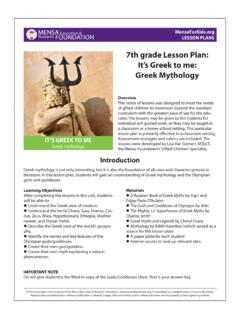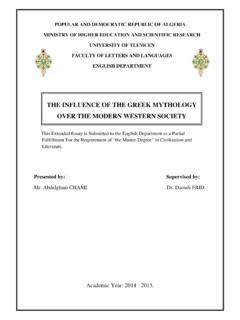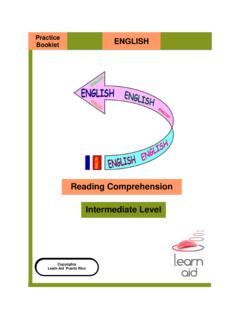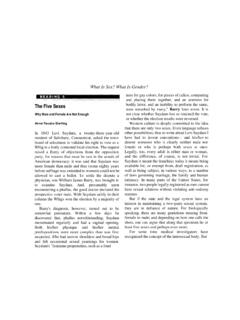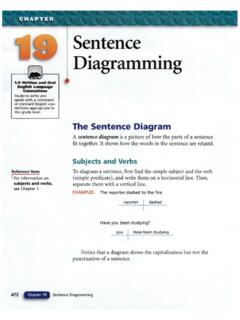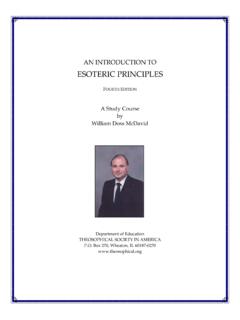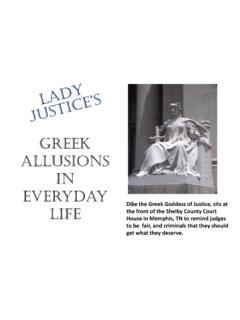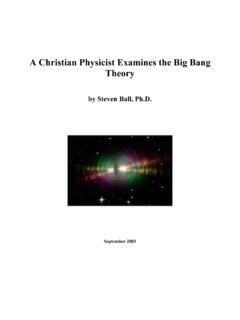Transcription of A Level English Language - Pearson qualifications
1 A Level English Language EXEMPLAR RESPONSES A Level Coursework Crafting Language Contents Contents .. 1 About this exemplar pack .. 2 Mark 3 Exemplar responses .. 6 Candidate A: Monologue .. 6 Assignment 1, Text 1: Sarah spills the beans .. 6 Assignment 1, Text 2: Sheila .. 7 Assignment 2: Commentary .. 10 Examiner comment .. 12 Candidate B: Article .. 13 Assignment 1, Text 1: We re radical believers .. 13 Assignment 1, Text 2: Artist profile .. 16 Assignment 2: Commentary .. 18 Examiner comment .. 19 Candidate C: Narrative .. 21 Assignment 1, Text 1: My Time, The Chance of a Lifetime .. 21 Assignment 1, Text 2: Downtown.
2 23 Assignment 2: Commentary .. 24 Examiner comment .. 26 Candidate D: Narrative .. 27 Assignment 1, Text 1: Yo Ho Sebastian .. 27 Assignment 1, Text 2: The Khyber 29 Assignment 2: Commentary .. 32 Examiner comment .. 33 GCE English Language Student exemplar responses to A Level Coursework Crafting Language 2 About this exemplar pack This pack has been produced to support English Language teachers delivering the new GCE English Language specification (first assessment summer 2017). The pack contains exemplar student portfolios for GCE A Level English Language Coursework Crafting Language . These portfolios have been adapted from coursework responses to the 2008 legacy specification, using two students creative pieces and commentaries for the creation of one new portfolio.
3 They have been marked against the new criteria. The coursework component assesses AO1, AO2, AO3, AO4 and AO5. Following each question you will find the mark scheme for the Level that the student has achieved, with accompanying examiner comments on how the marks have been awarded, and any ways in which the response might have been improved. GCE English Language Student exemplar responses to A Level Coursework Crafting Language 3 Mark scheme GCE English Language Student exemplar responses to A Level Coursework Crafting Language 4 GCE English Language Student exemplar responses to A Level Coursework Crafting Language 5 GCE English Language Student exemplar responses to A Level Coursework Crafting Language 6 Exemplar responses Candidate A: Monologue Assignment 1, Text 1: Sarah spills the beans GCE English Language Student exemplar responses to A Level Coursework Crafting Language 7 GCE English Language Student exemplar responses to A Level Coursework Crafting Language 8 Assignment 1, Text 2.
4 Sheila GCE English Language Student exemplar responses to A Level Coursework Crafting Language 9 GCE English Language Student exemplar responses to A Level Coursework Crafting Language 10 Assignment 2: Commentary I have chosen dramatic monologues for my coursework genre. I have written two monologues, one is intended to entertain teenage girls, the other is aimed at a general adult audience. The monologue for teenage girls is called 'Sarah Spills the Beans'. For this piece I chose a subject that will interest this particular age group and I have tried to tackle some issues that matter to them. I placed my character in a 'typical' setting for a teenage girl, sitting cross-legged on the bed in her pyjamas with her laptop and earphones in.
5 This is a comfortable and realistic setting for her and it is one that my intended audience will relate to. I used foreshadowing at the very beginning of my monologue. In the same way that Tony Merchant does in 'The Caretaker' I included hints at what the plot will involve later ( I did feel really pretty and something every girl dreams of,). However, I didn't reveal that Sarah is talking about Prom night until later, therefore creating an enigma. Another of my style models was Wade Bradford's 'Cassandra's Rant'. In which the central character is dramatic and over exaggerates wildly. I wanted to create a similar voice for my character. I used exclamation marks to try to convey Sarah's theatricality. I also used unconventional orthography to indicate the animation in Sarah's voice and her enthusiasm; (AAAMAAAZING!)
6 I believe my audience will find this entertaining. Short sentences are also a feature that I used to give the impression that she is speaking very quickly, also showing happiness. An example of this is when she goes on about her hair; I was really chuffed with my hair. I'd been .. Bradford's script has a semantic field of greek mythology , mine of weddings, for example, big day and you only do it once, therefore when the audience learns it is her high school prom they will find her obsession humorous. I used colloquial sociolect, like and and stuff, common fillers used by teenagers, which will engage the target audience. Another word typical of teenage sociolect, was madness used to describe something that is bad.
7 The relationship between character and audience is informal at first, an inviting 'girlie' gossip, although an unequal relationship develops as the audience begins to laugh at her, not with her. The audience may find Sarah is a character whose traits they can see in their own friends. In both pieces I have made use of dramatic irony. Here, the irony is that Sarah does not realise that she is, herself, a Promzilla, something she constantly criticises and mocks. The audience will find Sarah at first vain but humorous, anticipating the character's realisation moment. From the constructive criticism I received, I chose to give my GCE English Language Student exemplar responses to A Level Coursework Crafting Language 11 character this moment of realisation.
8 I aimed to make the audience warm to Sarah by the end when she realises her obsession. Sarah becomes more 'human' and less self-centred in this section which hopefully changes the audience's view of the character. For example Sarah describes herself first as having persuaded her mother to buy her dress, later she admits to nagging. I think that the subject matter, the distinctive teenage voice of the character and her Language will successfully appeal to an audience of teenage girls. The monologue for a general adult audience involves a middle-aged, well-spoken woman. I have experimented with the form of the monologue in this piece as it involves my main character talking to a number of different people who turn out to be versions of herself.
9 The subject matter, the ups and downs of different stages of a woman's life would be appropriate for an adult audience. Also the revelations about domestic violence would be more appropriate to an older audience. As with 'Sarah Spills the Beans', I have tried to create a convincing character. Here, I did it partly by using colloquial Language and hedging, such as Uh huh, to make the speech sound 'chattier'. I have also used emboldening (graphology) indicate stress on the words my character is saying. I used capitalisation to show the anger in her voice. STUPID WOMAN. At the beginning, my main character is talking to a young child. I used the accommodation theory and adapted my character's speech towards the child by using words such as sweetie and darling.
10 There are a lot of questions in my discourse as I felt that was the best way to show my character was in a group session; And how old are you .. sorry? 30? Towards the end I have used hesitation and false starts to show my character is becoming upset and in great confusion. This also causes confusion and an enigma for the audience; He was my second marriage. He, er (pauses) .. his name was Darren. I wanted to keep the truth of the situation hidden until the end of the monologue. I got this idea through seeing Alan Bennett's monologue, 'My Big Chance' in which the truth in the situation is known to the audience but not to the character (dramatic irony). I adapted this technique but made my piece one in which the truth about the situation only becomes apparent to the audience at the very end.










